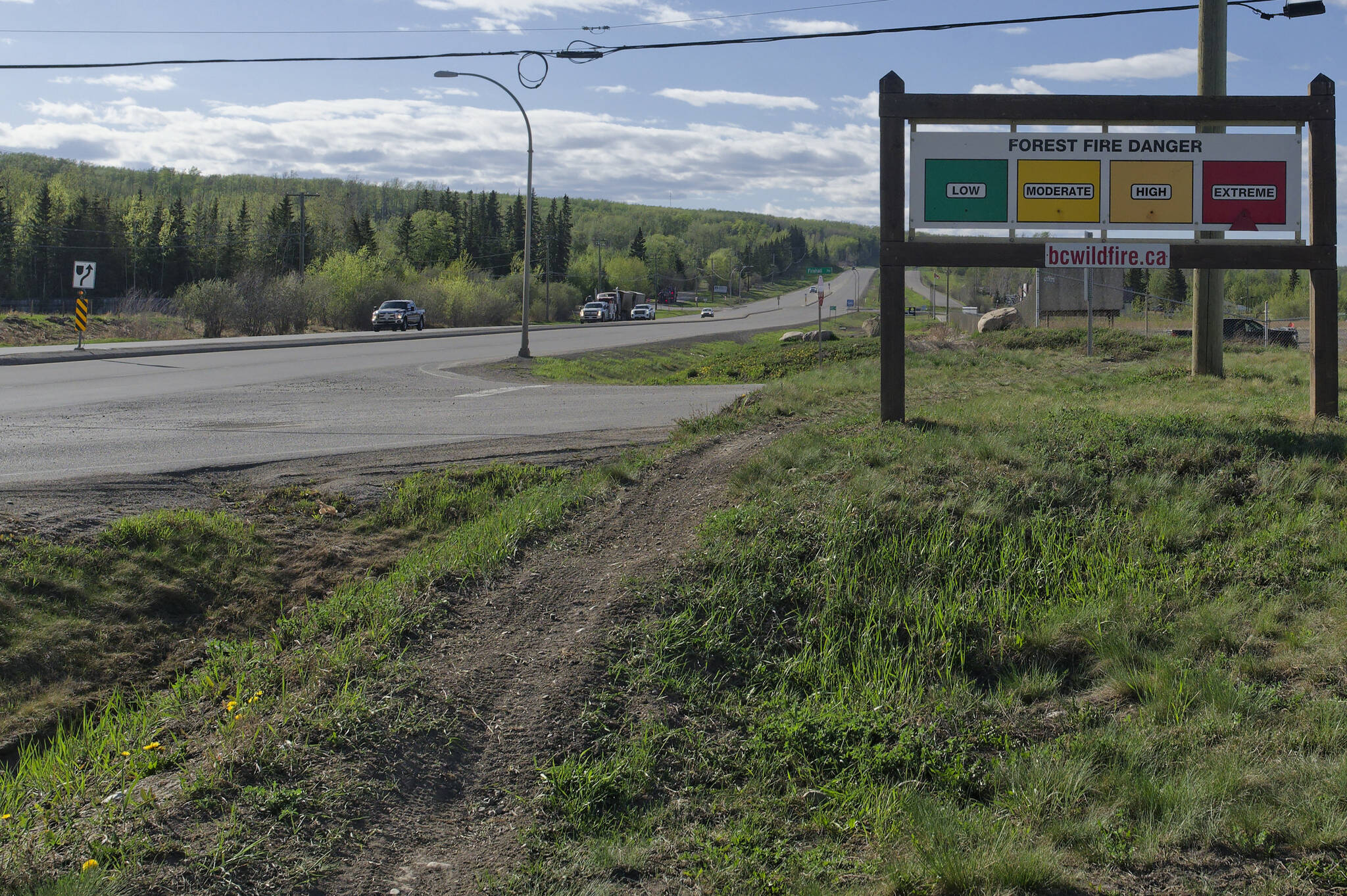A wildfire threatening the town of Fort Nelson in far northeast B.C. has inflicted “some structural damage,” according to the community’s mayor.
Rob Fraser, the mayor of the Northern Rockies Regional Municipality, which includes Fort Nelson, says the damage occurred on rural properties outside town, around the northern flank of the fire.
Staff at the emergency operations centre in Fort Nelson were assessing the damage and contacting property owners, he said in an interview on Thursday.
Fraser would not say how many properties had been damaged or if the damaged structures included homes.
The mayor said he had wanted to wait before making the news public, but someone with a camera had taken video showing some of the damage.
“Could you imagine, for the first time, seeing that structures on your property have been damaged because you saw it on social media? It’s just, it’s tragic,” he said.
“It sort of forced our hand … We wanted to ease the folks into that a little bit.”
Fraser was back in Fort Nelson after travelling to Fort St. John, 380 kilometres to the south, to meet with evacuees on Wednesday.
In a video posted to Facebook earlier this week, he said Fort St. John had to absorb the “shock” of about 3,500 people dropping “into a community of 25,000.”
The town is heaving since Fort Nelson residents were told to flee there on Friday in the face of the Parker Lake wildfire.
Evacuees packed the parking lot of the North Peace Arena in Fort St. John on Wednesday after a meeting to explain their situation, many leaving with maps in their hands showing the fires’ locations, spreading out to hotels that have had to absorb thousands of unexpected guests.
Fraser said Wednesday that the fires burning near their community leave the future in the short term “up in the air,” and there is no solid timeline for when residents can return.
“We don’t want to be in that situation where we turn people back to the community and three days later we just send them out again,” he said. “That would be just a nightmare.”
For Fort St. John businesses, the impact of the influx was almost immediate.
Jalen Etter, 18, a waiter at the Denny’s attached to a hotel where many evacuees were staying, said the restaurant did its highest sales ever on Saturday as the evacuees rolled into town.
Etter said that his supervisor had told him before his shift that day to “just be prepared.”
“I’m like, ‘Well it can’t be too bad.’ I was wrong,” he said on Wednesday. “People kept on coming in.”
The influx meant the restaurant ran out of a lot of stock on Tuesday, he said.
“We had no steaks. We couldn’t serve burgers, no soup, salad, fish and chips, no milkshakes, any of that stuff,” he said.
Hotel manager Zeny Patel at the Howard Johnson in Fort St. John said there was a change of ownership a month ago, and staff were still working on a deep clean and computer system transition when unhappy evacuees started showing up.
Patel said many didn’t have money, identification or proper luggage, and the hotel, and many others in town, was full of evacuees.
She said the government supports for evacuees were helping, but it was still a “stressful” situation to be in.
“We have to deal with their emotions, so we are supporting them as much as we can,” she said. “Guests are our priority right now.”
Some businesses have been rolling out the welcome mat for the evacuees.
Local cinema The Lido has been hosting free movie nights for them, including popcorn and drinks, sponsored by a pair of local energy companies. BarBurrito has been offering discounts for evacuees.
After the meeting Wednesday, Fraser said officials were able to answer people’s questions, but residents were “anxious about coming back to the community.”
“I feel we’ve allayed some of their fears,” he said.
He told evacuees that it was by “the grace of God” that the Parker Lake wildfire, fanned by winds of 70 kilometres per hour, didn’t sweep through the community of about 4,700 residents last Friday.
The BC Wildfire Service says the blaze about two kilometres west of the town now spans 127 square kilometres, up from 84 square kilometres earlier this week, but it has spread away from the town along its southern flank.
An update from the service on Thursday says winds over the fire were expected to shift, pushing smoke back into the area and challenging aerial firefighting efforts.
But it says a low-pressure system with cooler temperatures and higher humidity led to decreased fire activity on Wednesday, allowing crews to work closely along the fire’s edge and make progress on “direct attack objectives.”
Fraser said Thursday that the calmer conditions have allowed the BC Wildfire Service to determine where the hot spots are and target their efforts accordingly.
But he said there’s potential for the blaze to flare up again if winds accompany the sunny skies and warmer temperatures in the forecast for this weekend.
“We’re not out of the woods yet. But everybody’s feeling good that we’re not in a defensive mode anymore, we’re in an offensive mode.”
READ ALSO: Forecast turns friendly in northern B.C. wildfire fight
READ ALSO: Lessons from 2016 battle feed 2024 Fort McMurray wildfire fight

